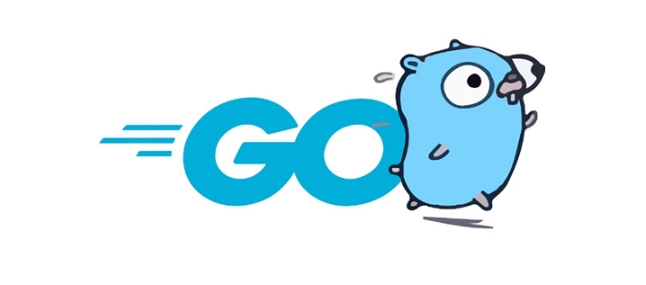How can you check for race conditions in your Go code?
Aug 01, 2025 am 06:42 AMThe best way to detect race conditions in Go is to use the built-in race detector with the -race flag. 1. Run go run -race main.go or go test -race ./... to enable the race detector, which identifies concurrent read-write access to shared variables and provides detailed reports including goroutine traces and access types. 2. Write tests that actively exercise concurrency by using multiple goroutines, loops, and sync.WaitGroup to coordinate execution and increase the likelihood of exposing races. 3. Avoid common race-prone patterns such as unsynchronized access to global variables, improper closure use in loops, and unprotected shared structs by using sync.Mutex, channels, or sync/atomic for safe concurrency. 4. Complement dynamic detection with static analysis using go vet ./... to catch basic issues, though it cannot detect most races. The race detector is essential during development and testing, especially in CI pipelines, and should be used routinely because race conditions often manifest silently without crashes, meaning untested concurrent code likely contains undetected races.

Race conditions in Go can be tricky to spot because they don’t always cause crashes or obvious bugs—they might just lead to inconsistent or incorrect behavior under load. Fortunately, Go provides a built-in tool to help detect them: the race detector.

Use the Go Race Detector
The most effective way to check for race conditions is to enable Go’s built-in race detector by adding the -race flag when running your program:
go run -race main.go
Or when testing:

go test -race ./...
This flag instruments your code to detect concurrent access to shared variables where one access is a write. When a race is detected, the tool prints a detailed report showing:
- Which goroutines accessed the variable
- The stack traces for each access
- Whether the access was a read or write
For example, if two goroutines read and write the same variable without synchronization:

var counter int
func main() {
go func() {
counter
}()
go func() {
counter
}()
time.Sleep(time.Second)
}Running go run -race will likely report a data race on counter.
Write Tests That Exercise Concurrency
The race detector only catches races that actually occur during execution. So you need to create test scenarios that stress concurrent execution.
Tips:
- Run tests with multiple goroutines accessing shared state.
- Use loops to increase the chance of overlapping execution.
- Add
time.Sleepcalls sparingly (only for demonstration—avoid in real tests). - Prefer using
sync.WaitGroupto coordinate goroutines in tests.
Example test:
func TestCounter(t *testing.T) {
var counter int
var wg sync.WaitGroup
for i := 0; i < 10; i {
wg.Add(1)
go func() {
defer wg.Done()
counter // Race!
}()
}
wg.Wait()
}Run with go test -race to catch the race.
Avoid Common Patterns That Cause Races
Even with the race detector, it helps to recognize unsafe patterns:
- Unsynchronized access to global variables
- Closures capturing loop variables (though Go 1.22 improved this)
- Shared structs without mutex protection
Instead:
- Use
sync.Mutexorsync.RWMutexto protect shared data. - Use channels to pass ownership instead of sharing memory.
- Consider
sync/atomicfor simple atomic operations (e.g.,atomic.AddInt64).
Use Static Analysis Tools (Limited Help)
While the race detector is dynamic (needs execution), tools like go vet can catch some suspicious constructs, though they won’t find most races. Still, always run:
go vet ./...
It may catch obvious mistakes, like locking the wrong mutex or copying locked structs.
Bottom line: The -race flag is your best friend. Use it regularly during testing, especially in CI pipelines. It has performance and memory overhead, so leave it off in production—but never skip it during development and testing.
Basically, if you're writing concurrent Go code and aren't using -race, you're probably shipping races.
The above is the detailed content of How can you check for race conditions in your Go code?. For more information, please follow other related articles on the PHP Chinese website!

Hot AI Tools

Undress AI Tool
Undress images for free

Undresser.AI Undress
AI-powered app for creating realistic nude photos

AI Clothes Remover
Online AI tool for removing clothes from photos.

Clothoff.io
AI clothes remover

Video Face Swap
Swap faces in any video effortlessly with our completely free AI face swap tool!

Hot Article

Hot Tools

Notepad++7.3.1
Easy-to-use and free code editor

SublimeText3 Chinese version
Chinese version, very easy to use

Zend Studio 13.0.1
Powerful PHP integrated development environment

Dreamweaver CS6
Visual web development tools

SublimeText3 Mac version
God-level code editing software (SublimeText3)

Hot Topics
 How does the switch statement work in Go?
Jul 30, 2025 am 05:11 AM
How does the switch statement work in Go?
Jul 30, 2025 am 05:11 AM
Go's switch statement will not be executed throughout the process by default and will automatically exit after matching the first condition. 1. Switch starts with a keyword and can carry one or no value; 2. Case matches from top to bottom in order, only the first match is run; 3. Multiple conditions can be listed by commas to match the same case; 4. There is no need to manually add break, but can be forced through; 5.default is used for unmatched cases, usually placed at the end.
 how to break from a nested loop in go
Jul 29, 2025 am 01:58 AM
how to break from a nested loop in go
Jul 29, 2025 am 01:58 AM
In Go, to break out of nested loops, you should use labeled break statements or return through functions; 1. Use labeled break: Place the tag before the outer loop, such as OuterLoop:for{...}, use breakOuterLoop in the inner loop to directly exit the outer loop; 2. Put the nested loop into the function, and return in advance when the conditions are met, thereby terminating all loops; 3. Avoid using flag variables or goto, the former is lengthy and easy to make mistakes, and the latter is not recommended; the correct way is that the tag must be before the loop rather than after it, which is the idiomatic way to break out of multi-layer loops in Go.
 Building Performant Go Clients for Third-Party APIs
Jul 30, 2025 am 01:09 AM
Building Performant Go Clients for Third-Party APIs
Jul 30, 2025 am 01:09 AM
Use a dedicated and reasonably configured HTTP client to set timeout and connection pools to improve performance and resource utilization; 2. Implement a retry mechanism with exponential backoff and jitter, only retry for 5xx, network errors and 429 status codes, and comply with Retry-After headers; 3. Use caches for static data such as user information (such as sync.Map or Redis), set reasonable TTL to avoid repeated requests; 4. Use semaphore or rate.Limiter to limit concurrency and request rates to prevent current limit or blocking; 5. Encapsulate the API as an interface to facilitate testing, mocking, and adding logs, tracking and other middleware; 6. Monitor request duration, error rate, status code and retry times through structured logs and indicators, combined with Op
 Using the Context Package in Go for Cancellation and Timeouts
Jul 29, 2025 am 04:08 AM
Using the Context Package in Go for Cancellation and Timeouts
Jul 29, 2025 am 04:08 AM
Usecontexttopropagatecancellationanddeadlinesacrossgoroutines,enablingcooperativecancellationinHTTPservers,backgroundtasks,andchainedcalls.2.Withcontext.WithCancel(),createacancellablecontextandcallcancel()tosignaltermination,alwaysdeferringcancel()t
 how to properly copy a slice in go
Jul 30, 2025 am 01:28 AM
how to properly copy a slice in go
Jul 30, 2025 am 01:28 AM
To correctly copy slices in Go, you must create a new underlying array instead of directly assigning values; 1. Use make and copy functions: dst:=make([]T,len(src));copy(dst,src); 2. Use append and nil slices: dst:=append([]T(nil),src...); both methods can realize element-level copying, avoid sharing the underlying array, and ensure that modifications do not affect each other. Direct assignment of dst=src will cause both to refer to the same array and are not real copying.
 Building a GraphQL Server in Go
Jul 28, 2025 am 02:10 AM
Building a GraphQL Server in Go
Jul 28, 2025 am 02:10 AM
InitializeaGomodulewithgomodinit,2.InstallgqlgenCLI,3.Defineaschemainschema.graphqls,4.Rungqlgeninittogeneratemodelsandresolvers,5.Implementresolverfunctionsforqueriesandmutations,6.SetupanHTTPserverusingthegeneratedschema,and7.RuntheservertoaccessGr
 Working with Time and Dates in Go
Jul 30, 2025 am 02:51 AM
Working with Time and Dates in Go
Jul 30, 2025 am 02:51 AM
Go uses time.Time structure to process dates and times, 1. Format and parse the reference time "2006-01-0215:04:05" corresponding to "MonJan215:04:05MST2006", 2. Use time.Date(year, month, day, hour, min, sec, nsec, loc) to create the date and specify the time zone such as time.UTC, 3. Time zone processing uses time.LoadLocation to load the position and use time.ParseInLocation to parse the time with time zone, 4. Time operation uses Add, AddDate and Sub methods to add and subtract and calculate the interval.
 How to use template.ParseFS with go embed?
Jul 30, 2025 am 12:35 AM
How to use template.ParseFS with go embed?
Jul 30, 2025 am 12:35 AM
Use the template.ParseFS and embed package to compile HTML templates into binary files. 1. Import the embed package and embed the template file into the embed.FS variable with //go:embedtemplates/.html; 2. Call template.Must(template.ParseFS(templateFS,"templates/.html")))) to parse all matching template files; 3. Render the specified in the HTTP processor through tmpl.ExecuteTemplate(w,"home.html", nil)






